Hellebores (Hellborus) are commonly known as Lenten Rose given their blooms are a late winter / early springtime staple in zone 4-9 shade gardens. The toothed, green leaves are leathery and stay evergreen through a mild winter. Damaged leaves are quickly replaced in late winter to early spring, adding a necessary lift to garden early in the year. Hellebore flower heads hang upside-down and their true beauty cannot be completely appreciated. The best way to show off the flowers is to float them in a bowl of water.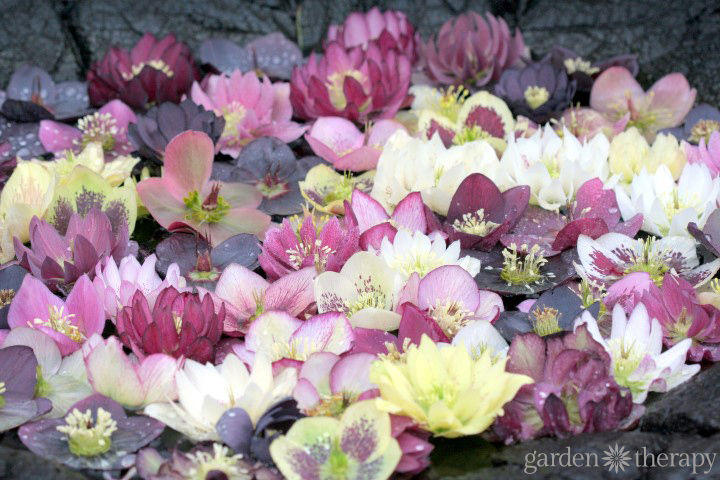
Hellebore blooms come in variety of colors including green, white, yellow, red, black, and many variations of pink and purple. Double blooms or single, spotted or freckle-free, there are many hellebores to choose from. Here are some of the most popular varieties and a list of some notable ones that would be a beautiful addition to your garden.
Popular Hellebore Selections
- argutifolius, Corsican hellebore, features light green leaves and pale green flowers. Hardy to zone 6.
- foetidus, stinking hellebore, is so named because its foliage has a pungent scent when it is crushed. It is also known as “bear’s foot.” Its leaves are dark green and the nodding flowers are light green, often with a reddish blush. Hardy to zone 5.
- niger, Christmas rose, has dark green, leathery leaves. Its pink flower buds open white with a pale green center. Hardy to zone 4 (in some instances zone 3).
- orientalis, Lenten rose, has leaves that are dark green and coarsely serrated. Bloom color ranges from white to red-black, sometimes with freckles, streaks, or other patterns. Hardy to zone 4.
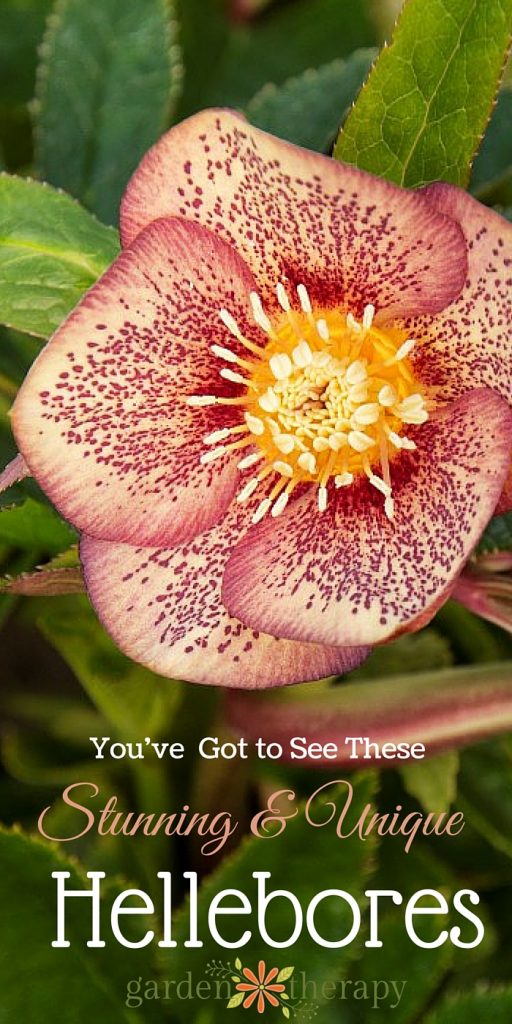
Hats off to These Notable Varieties
Windcliff Double (Helleborus x ‘Windcliff Double Pink’), Zones 4-9
This is an exclusive selection made by Dan Hinkley at his Windcliff garden. “Stunning double pink flowers set this strain apart from the rest. It offers tremendous color impact beginning in late winter, continuing through spring. Mounded foliage emerges throughout the season provides year-round interest. This highly adaptable perennial for dappled shade is rarely bothered by pests or disease, and completely deer-proof.”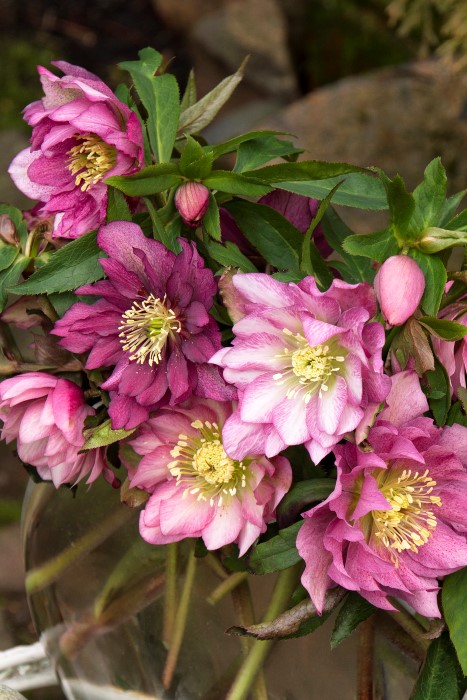
Apricot Blush (Helleborus ‘Apricot Blush’) – Zones 4-9
“From Marietta O’Byrne’s meticulous breeding program, this hybrid features varying shades of peachy-apricot blooms with darker rose veining, speckling or picotee edges. Emerging in early spring from vigorous clumps of foliage, these large, nodding flowers last for weeks.”
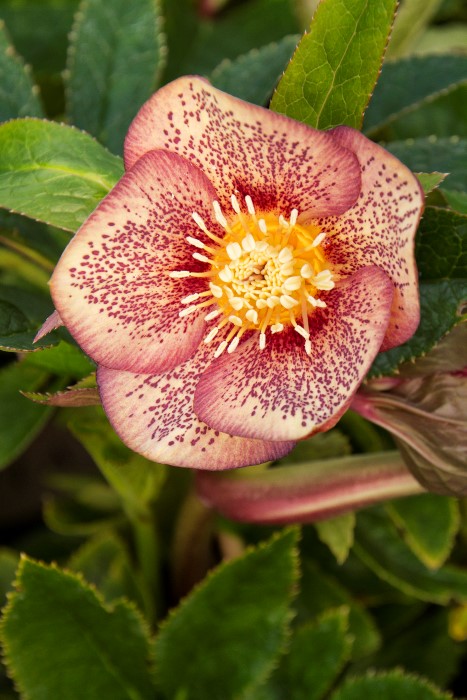 Cherry Blossom (Helleborus ‘Cherry Blossom’) Zones 4-9
Cherry Blossom (Helleborus ‘Cherry Blossom’) Zones 4-9
“Large, semi-double blooms of rich pink with deep, cherry red centers nearly glow against neat clumps of deer resistant, evergreen foliage. This extremely vigorous strain is the result of over 15 years of hand breeding and selection. A perfect addition to shady beds and borders.”
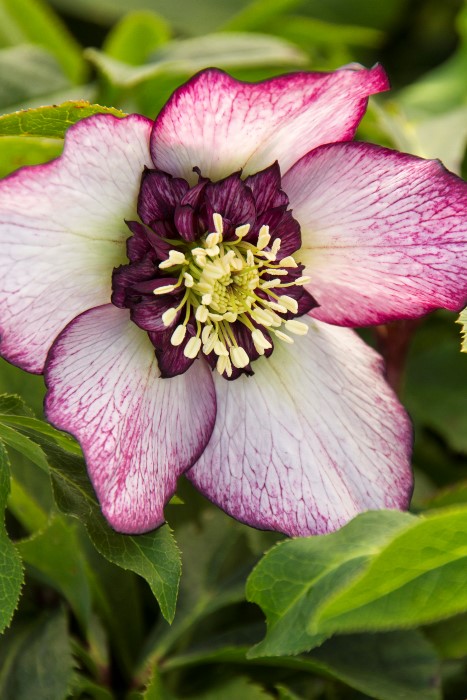
Ruse Black (Helleborus x ‘Ruse Black’) Zones 3-9
“A new selection from Japan, offering unique and dramatic, deep dark-purple-black flowers on strong stems. Foliage is clean and virtually spot-free. Grown and selected from tissue culture by Miyoshi, this oriental hybrid is consistent in its exceptional color and form, unlike many seedling strains. A prolific bloomer for beds, borders and woodland gardens.”
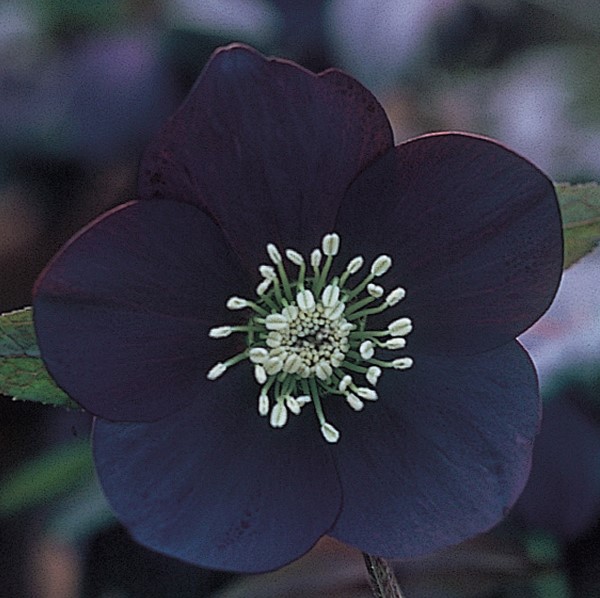
Ivory Prince (Helleborus x hybridus ‘Walhelivor’) – Zones 4-9
“Deep pink buds open to bright white flowers that face up and outward from the plant, unlike many. This virtually problem-free perennial brings delightful spring color to woodland, native or shade gardens.”
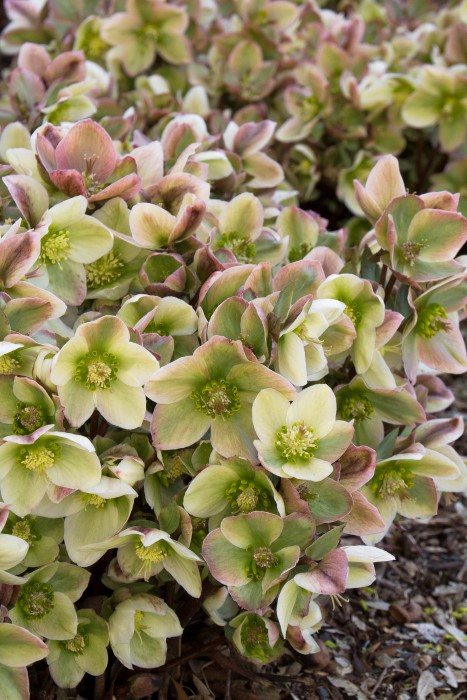
To propagate, divide the clumps after flowering, which will be in early spring or late summer. Hellebores can be grown from seed and will self-seed, but do not come true to type. With so much variety out there it’s quite fun to grow your own seedlings and be surprised at what will pop up. To read more about all things hellebore, please visit:
Hooray for Hellebores!
Read All About These Elegant Evergreen Beauties
Thank you to Monrovia for providing the stunning photos of these magnificent hellebores!

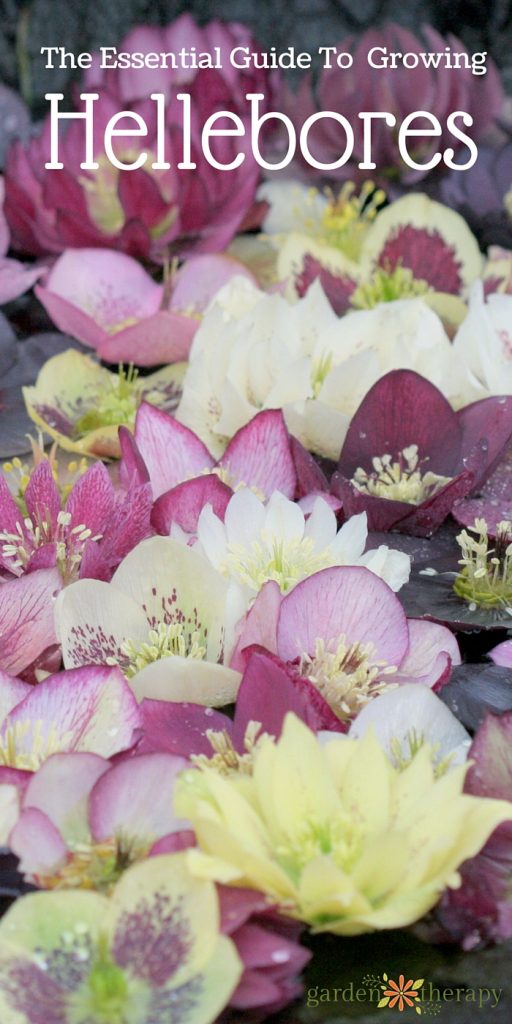
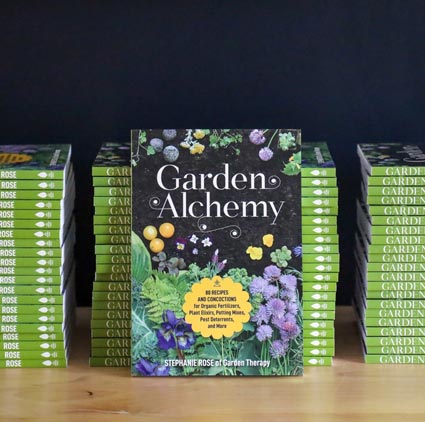


Would like to have the Colors of the Single & Double or Hellbores. If possible send the pictures.